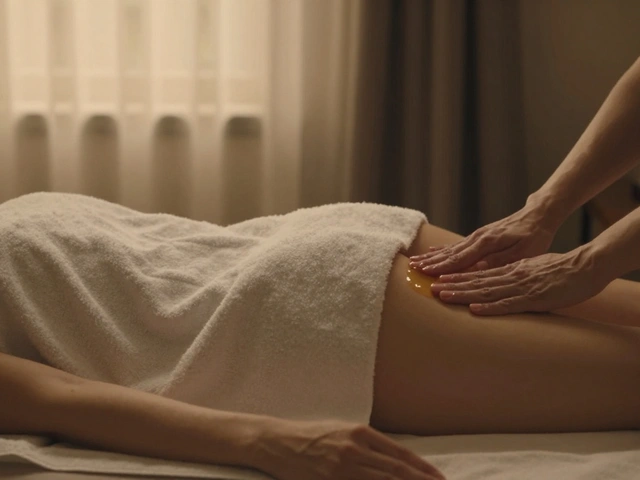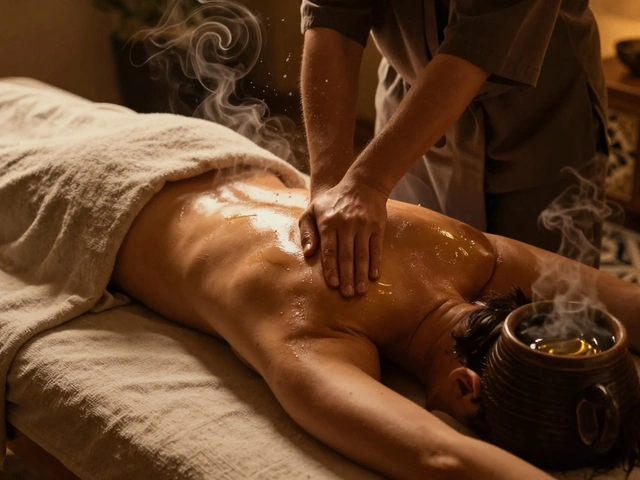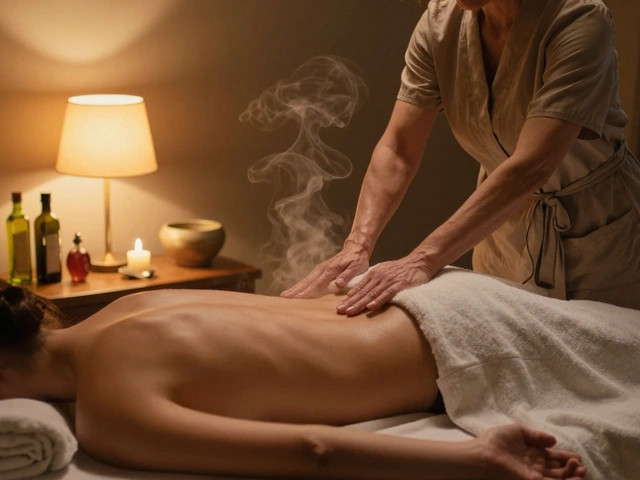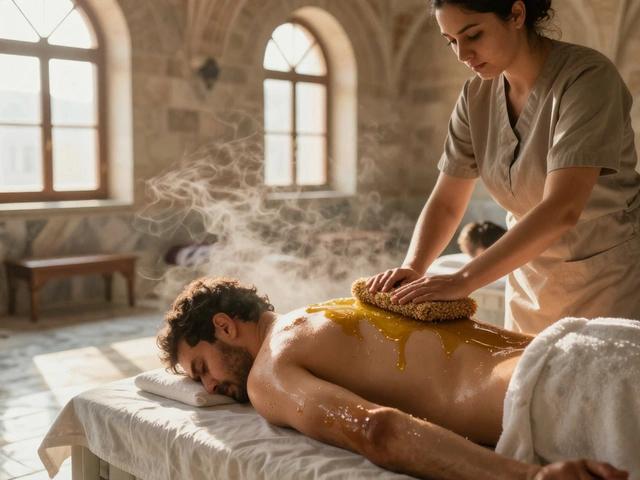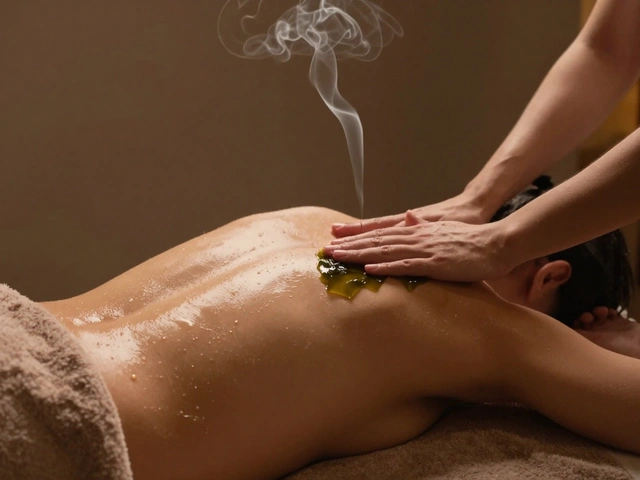You’d be surprised how many people visit Istanbul just to get pampered but end up lost in the maze of massage prices, deals, and endless spa choices. You open a dozen spa websites, only to find the pricing buried—or worse, the famous Turkish hamam guy at the door tries to upsell you into oblivion. If you want to chill out and skip the stress, you need to know how much a massage in Istanbul should really cost, what’s worth your lira, and what traps to avoid, right?
Key Points
- Massage prices in Istanbul range from 500 TL for basic sessions to 2500 TL+ for luxury spa treatments.
- Neighborhood, service type, and spa reputation can swing the price dramatically.
- Popular types include Turkish Hammam, classical Swedish, Thai, and specialty offerings like oil and aromatherapy massage.
- Booking online often scores you better deals than walk-ins, especially at busy times.
- Always check reviews, hygiene standards, and what’s included before booking to avoid hidden fees.
Direct Answer
On average, expect to pay around 700-1200 TL ($23–$40 USD) for a one-hour professional massage in Istanbul, but basic neighborhood salons can be as low as 500 TL, while five-star hotel spas reach up to 2500 TL+ per session. Turkish Hammam experiences have their own price scale, usually starting from 700 TL for a basic scrub, but premium packages with massage and extras can hit 2000 TL or more. Always confirm what’s included in the price—towels, scrubs, oils, and tips might all be extra.
Comprehensive Guide to Massage Istanbul Price: Finding Your Perfect Match
Let me paint you a picture: you’re wandering the bustling streets around Sultanahmet or Beyoğlu, trying to shake off jet lag. Suddenly, you crave a massage—a real one, not just a quick shoulder rub. Istanbul is packed with choices: steamy Turkish baths, sleek hotel spas, cheerful Thai massage joints, and everything in between. Trouble is, there’s no set price tag. You could end up splurging far too much or getting shortchanged on quality. So, what sets the price? The location, the type of massage, the reputation of the place, and, sometimes, how touristy you look. Sure, you could play spa roulette, but a bit of know-how helps you find that sweet spot where price meets quality.
Istanbul’s wellness culture blends Ottoman heritage, modern luxury, and a dash of international flavor. Traditional hamams (the iconic dome-tiled bathhouses) offer packages that start with a basic soap-and-scrub experience (often called kese) and go up to full-body oil massages with steam rituals and marble relaxation rooms—it’s practically a spa mixtape. Meanwhile, newer day spas and hotel wellness centers offer global favorites, from Swedish to deep tissue and beyond. And don’t forget independent therapists, who might offer more customized sessions at fair prices if you know where to look.
Prices swing based on multiple factors. Location is king: central neighborhoods like Taksim, Şişli, and Sultanahmet usually mean higher costs. Five-star hotels stick a premium on the ambiance and exclusive amenities, sometimes doubling the price of the same service at a local salon. Treatments booked online—especially on local deal sites—can shave a few hundred lira off your bill or toss in bonus perks like foot scrubs or a longer session time. Some places cater to tourists with “special” rates, which aren’t always special in your favor. Locals know to ask for the Turkish price or check trusted review sites before booking, so it pays to do your homework.
Did you know? Istanbul’s hamams date back to the 15th century—Süleymaniye Hamam, for one, has been steaming since 1557. That original experience, though, can cost less at neighborhood hamams and go sky-high at heritage-filled or celebrity-endorsed historic ones. For regular massages, most spots work on a one-hour baseline. Tipping is expected—usually 10-15%—and isn’t included in the online quote. Sometimes, towel rentals, disposable slippers, or fancy oils are extra, even when you think everything’s all-in.
If you see a “too good to be true” massage price, ask for details. Some ultra-low quotes only include the basic hamam access, not the actual massage. Always clarify what you’re getting for the listed price and check for add-ons. Ready to snag your perfect match? Let’s dive into what these services actually mean, why locals and travelers love them, and how to make your lira go the distance.
Definition and Context: What Massage Means in Istanbul
Think of massage in Istanbul as a spectrum, not a single definition. On one end, you have the classic Turkish hamam: centuries-old marble bathhouses offering steamy scrubs (kese), gentle bubble massages (kopuk), and a communal soak. On the other end, there are stylish wellness centers in Nişantaşı and posh waterfront hotel spas on the Bosphorus dishing out hot stone sessions, aromatherapy, or even shiatsu. Somewhere in the middle? Neighborhood salons and quick-in, quick-out Thai massage studios.
Why does this matter? Each massage style comes with not only a different vibe, but also a different price point, duration, and add-on options. Turkish baths focus on ritual—a whole experience around cleansing, relaxation, and sometimes, a hint of theater. Modern spas usually look and smell like a dreamy Pinterest board, often using global standards and imported oils. Then, there’s the practicality of independent therapists—usually a flat fee for a home visit, perfect for those who want personalized care but not the frills.
So why all the variety? Istanbul’s massage tradition mirrors the city’s history—a mix of east and west, old and new. While the city boasts serious spa prestige (Forbes once listed several Istanbul spas among Europe’s best), “massage” here can mean anything from a 20-minute foot rub to a two-hour deep relaxation journey. Local laws are strict about advertising certain massages, particularly exotic or adult-themed types—watch for euphemisms or “wellness” terms. Meanwhile, classic forms like hamam and Swedish massage are everywhere and totally above board. When in doubt, check the menu or ask the staff to walk you through the details.
It pays to know the lingo. A “kese” is the scrubbing process, done with a special glove—a must for baby-soft skin but not every visitor’s cup of tea. A “kopuk” is the famous foam massage, an ultra-relaxing cloud of suds and expert hands. Western-style massages—like deep tissue or aromatherapy—tend to have a set routine and often come with a menu listing duration and focus (full-body, back & neck, etc.). Couples massages are on the rise, too, often with perks like side-by-side massage beds and a private chill-out room.
So—when you check a spa’s price, you’ll need to know what’s really being offered. Is it just the hamam entry, a full ritual, or a Swedish-style bodywork? Are there separate charges for towel rentals or steam sessions? Spot a “package” deal? Make sure you know what’s included. Add in Istanbul’s world-class tea service, and you’re set for a treat.

Benefits of Getting a Massage in Istanbul
Istanbul might have a reputation for nightlife and nonstop energy, but locals are obsessed with relaxation. There’s a reason Turkish baths never go out of style. A proper massage knocks out travel fatigue, boosts circulation, and leaves you feeling lighter. And there’s the added bonus: the way Istanbul does spa treatments feels genuinely special—ceremonial in the old hamams, totally luxe in new hotels.
Travelers and locals alike swear by the post-massage “glow.” If you book a hamam with kese, people say their skin feels smoother for days. And honestly? There’s no rival to the grounding peace you get from steaming under marble domes, followed by a traditional scrub—and maybe a cup of apple tea after. At contemporary spas, high-end offerings include organic oils and signature blends that you rarely see elsewhere. If you splurge for a couples massage at somewhere like the Four Seasons or a boutique spa near Karaköy, expect personalized treatment—think: matching robes, shared relaxation lounges, maybe even champagne.
Regular massage helps with muscle tension, anxiety, and jetlag, which is pretty handy after slogging through crowds at the Grand Bazaar or navigating Istanbul’s endless traffic. Some therapists use gentle Turkish red clay detox masks, while others stick with classic oils. And let’s not skip the mood lift: a well-done massage can shift your entire day, especially if you feel travel-worn or overwhelmed. Interestingly, Istanbul’s spa staff are trained to spot tourists who need extra care. Most places offer sessions in English, and many staff will check in gently about your comfort or focus areas. Want to bring back a unique memory? A Turkish bath ritual is one souvenir you can actually feel, not just stick on a shelf.
Ever wonder why massages are priced lower here than in most European capitals? Labor and overhead costs are lower, and the city’s spa competition keeps prices fair. That means you can afford to treat yourself more than once—maybe a classic hamam one day, then a Swedish relaxation session the next. There’s real value in that flexibility.
Types of Massage Available in Istanbul
The city’s menu is vast, but here are the core options you’ll see in real-life Istanbul:
- Turkish Hammam: This is the traditional steam, scrub, and foam massage. Prices depend on whether you pick a basic session or an all-out ritual with refreshments, masks, and extra time. Expect the full experience to take 60-120 minutes.
- Swedish Massage: A gentle but firm massage, often with aromatherapy oils. Most modern spas offer this, usually 60 minutes per session.
- Thai Massage: Expect stretching and pressure points, often in smaller salons or specialist centers. Generally priced the same as Swedish massages.
- Deep Tissue: These target aches or sports injuries, and the pressure is intense. More popular in upscale hotel spas.
- Aromatherapy: Uses essential oils for relaxation or energy; can be paired with Swedish or deep tissue.
- Hot Stone: Heated basalt stones soothe muscles, mostly at luxury spas.
- Reflexology: This foot-based therapy is popular with walkers and tourists alike.
- Couples Massage: Increasingly common, these let two guests book side-by-side sessions, often with added perks.
Neighborhood salons often mix and match techniques to suit customer requests. If you see “luxury package” or “special ritual” on a price list, it usually means add-ons like face masks, longer time, or aftercare treatments—check what’s included before booking. And don’t forget seasonal specials; for example, some spas hand out cold towels and local fruit in summer, or promote herbal massages in winter.
How to Find Massage Services in Istanbul—And Get the Best Price
Finding your dream massage in Istanbul isn’t tough, but bagging the best deal? That’s where skill comes in. The traditional way is to wander into a hamam or spa and check the price list, but you can often score a far better rate online. Platforms like Tripadvisor, Google Maps, and Turkish site "Rezervin" crowdsource guest ratings and list ballpark prices, so you get a heads-up on reputation and cost. Look for photos: a clean, modern-looking place is a good sign.
For travelers staying in hotels, concierges often have partnerships with local spas, so don’t be afraid to ask for a neighborhood recommendation or VIP discount. Just steer clear of places that push last-minute upcharges. If you’re cool with fewer frills, neighborhood salons in districts like Kadıköy or Beşiktaş offer excellent massages for locals at a fraction of tourist prices. These spots often have price lists in Turkish, but most staff speak enough English to sort you out.
Still, if you want historical hamam vibes, check reviews before walking in—original bathhouses like Çemberlitaş Hamam or Ayasofya Hürrem Sultan Hamam see lots of tourists, so prices can be higher on weekends. Pro tip: book early in the day, when it’s quieter, and you might get extra time in the steam room for free. And keep an eye out for package deals and coupons; many spas partner with Istanbul’s travel apps or have their own seasonal offers. If you’re out for a bargain, don’t hesitate to ask, “Any special deals today?”—it’s standard practice and never awkward here.
Check out this comparison table for a quick reference on price ranges by type and location:
| Type of Massage | Neighborhood | Basic Price (1 hr) | Luxury Package (1.5-2 hrs) |
|---|---|---|---|
| Turkish Hamam | Sultanahmet | 800 TL | 1800 TL |
| Swedish Massage | Nişantaşı | 1100 TL | 2200 TL |
| Thai Massage | Karaköy | 900 TL | 1600 TL |
| Deep Tissue | Hotel Spa (Beşiktaş) | 1400 TL | 2500 TL |
| Aromatherapy | Neighborhood Salon | 700 TL | 1200 TL |
Want something really special? Ask if your spa includes Bosphorus-view relaxation rooms. Some places—especially boutique hotel spas—let you lounge with a view after your treatment at no extra charge.
What to Expect During a Session
Walking into an Istanbul hamam is a bit like stepping back in time. Most follow a tried-and-true ritual: you change into a peştemal (a thin cotton wrap), hand your valuables to the attendant, and head into the steamy, echoing marble chamber. An attendant (often called “tellak” for men,

